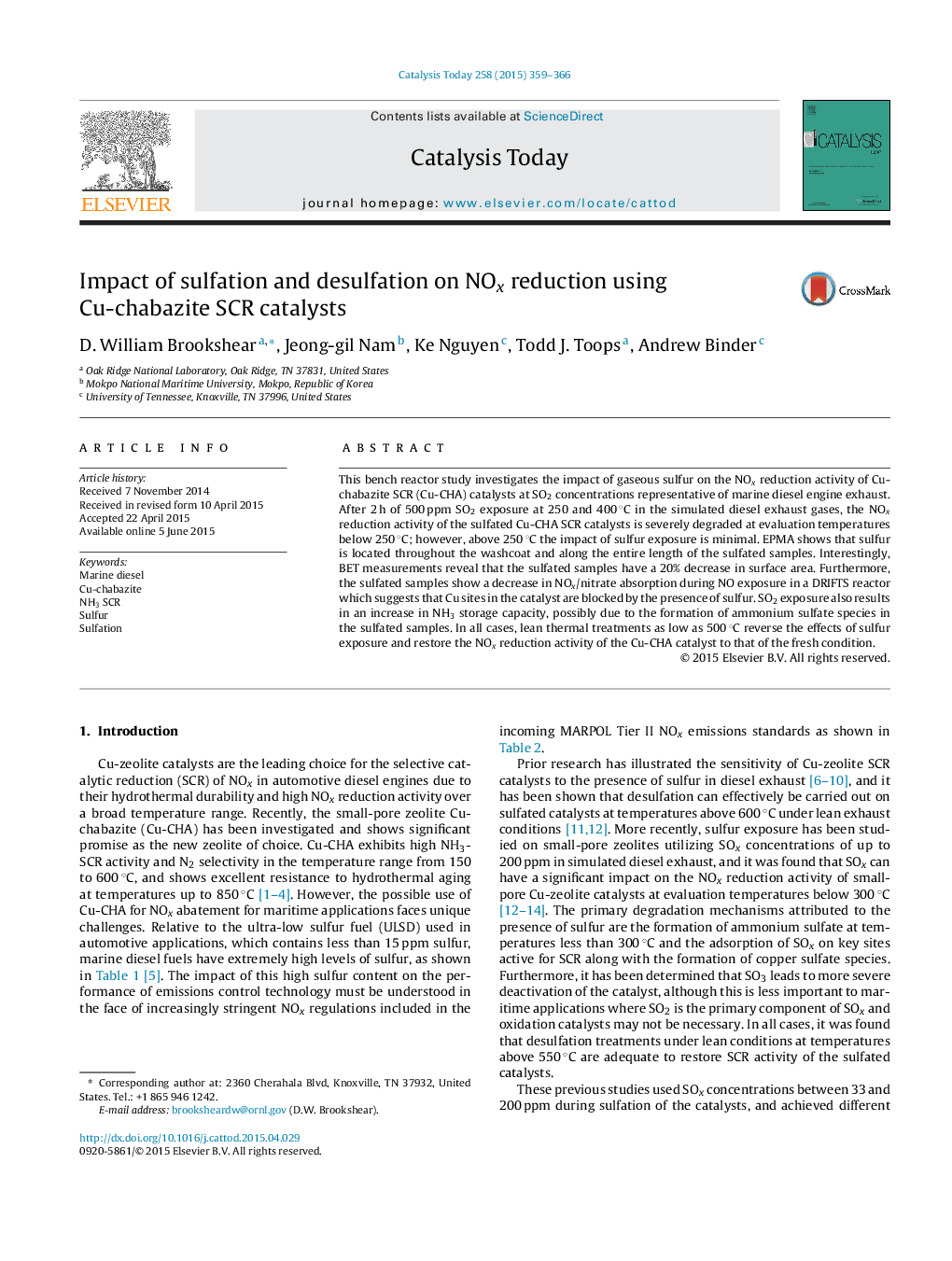| Article ID | Journal | Published Year | Pages | File Type |
|---|---|---|---|---|
| 53610 | Catalysis Today | 2015 | 8 Pages |
•Cu-CHA SCR catalysts exposed to levels of SO2 experienced in marine diesel engines.•Sulfur has significant but reversible impact on low temperature NOx conversion.•Presence of sulfur inhibits NOx adsorption by blocking active Cu sites.•Ammonium sulfate formation at low temperatures inhibits SCR activity.
This bench reactor study investigates the impact of gaseous sulfur on the NOx reduction activity of Cu-chabazite SCR (Cu-CHA) catalysts at SO2 concentrations representative of marine diesel engine exhaust. After 2 h of 500 ppm SO2 exposure at 250 and 400 °C in the simulated diesel exhaust gases, the NOx reduction activity of the sulfated Cu-CHA SCR catalysts is severely degraded at evaluation temperatures below 250 °C; however, above 250 °C the impact of sulfur exposure is minimal. EPMA shows that sulfur is located throughout the washcoat and along the entire length of the sulfated samples. Interestingly, BET measurements reveal that the sulfated samples have a 20% decrease in surface area. Furthermore, the sulfated samples show a decrease in NOx/nitrate absorption during NO exposure in a DRIFTS reactor which suggests that Cu sites in the catalyst are blocked by the presence of sulfur. SO2 exposure also results in an increase in NH3 storage capacity, possibly due to the formation of ammonium sulfate species in the sulfated samples. In all cases, lean thermal treatments as low as 500 °C reverse the effects of sulfur exposure and restore the NOx reduction activity of the Cu-CHA catalyst to that of the fresh condition.
Graphical abstractFigure optionsDownload full-size imageDownload high-quality image (143 K)Download as PowerPoint slide
